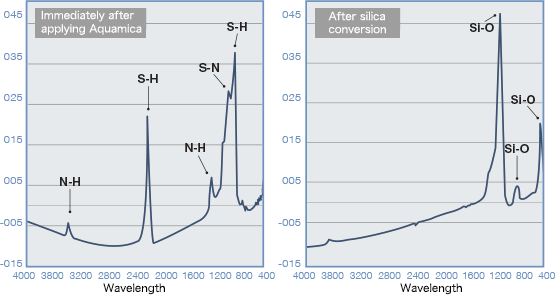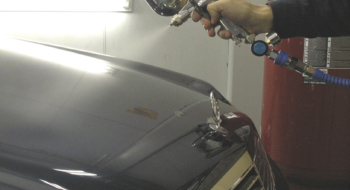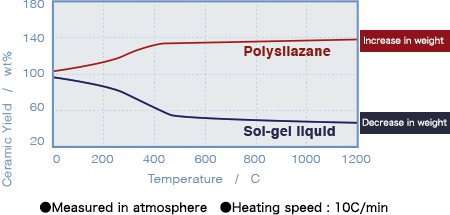- FE News»
- PPS News»
- Oct. 31, 2024
- [News Release R-1020] Release of "ECHELON Zen-Xero DYNAMIX”
- May. 15, 2024
- [News Release R-1019] Release of "ECHELON Ver.3.0”
- Oct. 02, 2023
- [News Release R-1018]Compound that achieves a genuine finish Full Renewal of “KATANA” Series
- Jun. 27, 2023
- [News Release] A final finishing compound that achieves a beautiful wet gloss. "KATANA DARK-SHOT" is Released.
- May. 22, 2023
- [News Release] Full renewal of buffing pad category Brand integrated into HAYABUSA
TRESMILE (polysilazane)
TRESMILE (polysilazane)
TRESMILE is a line of coating products based on polysilazanes such as perhydropolysilazane (PHPS). Originally patented and marketed by AZ Electronic Materials under the name Aquamica, the brand name was changed to TRESMILE following a transfer of manufacturing and sales rights to Sanwa Kagaku Corp. The series encompasses a diverse array of coatings, ranging from products with a long track record of success to new coatings that employ cutting-edge formulas. FE TRADE has carried polysilazane coatings since their creation, and we continue to work with the manufacturer to propose new products.
Polysilazanes are polymers with a backbone formed of Si and N atoms. They are used as precursors for silica-based materials in a variety of fields. Among the types of polysilazane, perhydropolysilazane (PHPS) has seen particularly widespread use as a material that forms a completely inorganic glass film. PHPS coatings gained popularity among automotive detailers for pioneering the concept of glass coatings for automobiles. Even today, PHPS coatings like ECHELON NEW VERSION remain widely used.
A variety of polysilazane types other than perhydropolysilazane also exist. The inorganic type was the original standard. To compensate for its weaknesses, a hybrid type was developed. Now, an organic type has been created and is expected to become the new standard for polysilazane coatings.
●Accelerated weathering test
| Base | Used polysilazane | Coating thickness | Test time | Result |
|---|---|---|---|---|
| Black steel sheet with baked urethane | NP140-01 | ~0.1μ | 300 hours | Glossy and no discoloration |
| No coating | Faded to gray with no gloss |
<Test conditions>
Testing organizations: Tsutsunakatekuno Co., Ltd. and Sumitomo Metal Technology Inc.
Test equipment: EYE Super UV Tester ・UV intensity: 90mW/cm2 ・Temperature: 63℃ ・Humidity: 80%
●Acid resistance test
| Coating liquid | Curing conditions | Coating thickness change |
|---|---|---|
| NP110 | 200℃ × 30 minutes | None |
| 250℃×30 minutes | None | |
| 300℃×30 minutes | None | |
| 50℃, 90% RH × 1 day | None | |
| Room temperature × 10 days | None |
<Test conditions>
・Substrate Si wafer
・Used polysilazane: NP110-20
・Application method: Spin coating
・Coating thickness: ~0.5 microns
・Acid resistance test conditions: 1% H2SO4 × 24 hours (room temperature)
◆Conversion from PHPS to SiO2 (IR analysis)

In the post-conversion analysis, only Si and O are detected, proving that the polysilazane has changed to inorganic glass.
●Test of various basic properties
| Test item | Test procedure | Test result |
|---|---|---|
| Hardness | Pencil hardness | 9H+ |
| Adhesion | Base tape peeling | 100/100 |
| Boiling resistance | Boiling for 30 minutes | No change in appearance No change in adhesion (100/100) |
| Acid resistance | 5% HCl x 1 hour | No change in appearance No change in adhesion (100/100) |
| Alkaline resistance | 5% NaCl x 1 hour | No change in appearance No change in adhesion (100/100) |
| Heat resistance | 200℃ x 24 hours | No change in appearance No change in adhesion (100/100) |
| Extreme temperature resistance | 200℃ x 10 minutes → 1 minute water cooling | No change in appearance No change in adhesion after 10 cycles (100/100) |
<Test conditions>
・Substrate: Stainless steel (SUS304)
・Used polysilazane: NN110-10
・Coating thickness: ~1 micron
・Baking: 300℃ x 1 hour

While conventional inorganic type polysilazanes have excellent coating performance, because they were originally developed for the precision machinery industry, they form very thin coatings that lack the sense of presence expected of automotive body coatings. In addition, fully inorganic coatings are very hydrophilic by nature, requiring a topcoat to provide water repellency.
During research on polysilazanes to address these issues, the focus fell on organic types, which seemed to hold the potential to become a new standard for polysilazane products.
This development process resulted in the creation of a hybrid type, which combines the conventional inorganic type and the new organic type in a certain ratio.
The hybrid type achieves a higher level of quality by drawing out the merits of each type, such as the hardness and durability of the inorganic type and the coating thickness of the organic type.
Now, making the most of our experience in the area, we are jointly developing the next generation of polysilazane coating: an organic type. Organic polysilazane coatings have excellent coating thickness, stain resistance and contain no xylene, making them environmental friendly. In addition, unlike inorganic types, they can provide water repellency and slipperiness.
We offer a comprehensive lineup of these types of polysilazane products, and can guide you to the type that best suits your needs.
Please feel free to consult us about any application of these products, from spray coating with a paint gun to use in different fields.
One of the major advantages of polysilazane is that it forms a glass coating that is high density despite being an amorphous film. Because it does not crystallize as-is when dripped on the surface like a typical silane coating, there is a tendency to doubt its performance as a coating. However, the secret to polysilazane's proven performance lies in the silica glass formation process.



















































